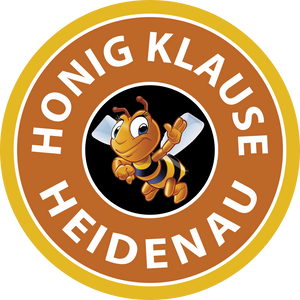

With this unique Honeyskull, designed by tattoo artist EL HAC from Vienna, we would like to draw attention to the mass extinction of honey bees, wild bees and bumblebees, which has been going on for years.
A sharp decline in the populations of these animals was first noted in 1995, when up to 50% of commercially managed bee colonies died in many countries. The explanation quickly became known as “Colony Collapse Disorder” (CCD), a phenomenon in which workers no longer return to the beehives and entire families of bees mysteriously disappear.
Indeed, CCD is a serious problem, but it is becoming increasingly clear that there are actually a multitude of causes that cause the death of bees: introduced
parasites such as the Varroa mite, monoculture and pesticides in agriculture, genetic engineering, lack of food sources throughout the year ...
The Bees are losing ever larger parts of their natural habitat through humans and have to face environmental toxins, introduced parasites and diseases - a fight that millions of bee colonies lose and die every year. If we do nothing for our bees now and change our behavior, it will soon be too late!
But without bees, not only would there be no honey, fruit and vegetables would also become luxury goods - the animals pollinate around 80 percent of our crops and wild plants. If it is not possible to keep the bee population and the insects become extinct, this would have fatal consequences for humans too!

WHAT CAN WE DO?
Sow bee-friendly plants.
A bee-friendly plant can be something in bloom in a balcony box, a fruit tree in the garden or wild plants. All of this offers a wide range of options for honey bees, which is particularly important for you when there is little forage.
A year-round and abundant supply of nectar and pollen is crucial for bees and bumblebees. Plant a diverse world of flowers!
Check out the 'SeedBall' Bee Mix Tin: here
Avoid using pesticides.
You should avoid pesticides, herbicides and biocides in your garden that are harmful to bees. This is especially true in spring when it gets warm for the first time and many swarms of bees settle in trees to look for a new home.
Choose honey from real beekeepers
Those who buy honey from small, family run businesses (like ours) support local beekeepers who do the work necessary for the preservation and health of the bees. They ensure the pollination of the plants in your area!
In addition, the consumption of local honey can have a positive effect on allergies, familiarize the immune system with the allergen in allergy sufferers and weaken possible allergic reactions.
DID YOU KNOW?
That a bee flies an average of 25 kmh?
That bees are often mistaken for wasps?
That a bee covers 8000 km in your life?
That bees have to fly out 40,000 times and visit 2 million flowers for 500g of honey?
That the bees have to fly 3.5 times around the earth for 500g of honey?
That the queen bee can live up to 4 years, winter bees 9 months and summer bees 6 weeks?
That queen bees lay up to 3,000 eggs a day?
That bees have existed on earth 100 times longer than humans?
That bees use “dance movements” to tell each other where and how far away a good source of food is?
That a single honey bee colony can pollinate up to 3 million fruit blossoms per day?
That the value of the pollination service provided by honey bees for agriculture exceeds the selling price of honey by up to 30 times?
That bees can also be kept on a city balcony?
That a total of 180 different substances beneficial for the human organism have been detected in honey?
That honey can also be used great for baking instead of sugar?
Content Courtesy of Honig-Met


